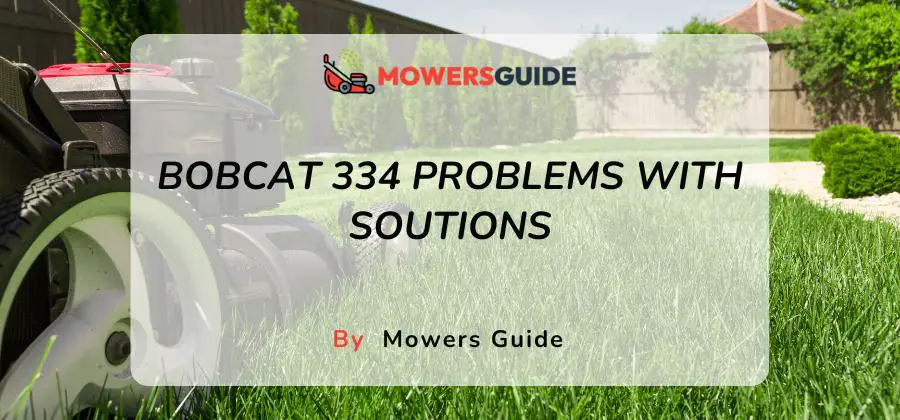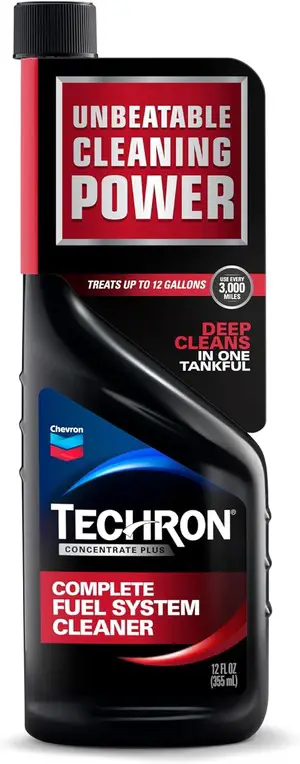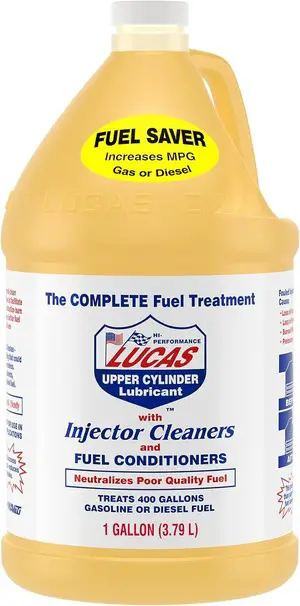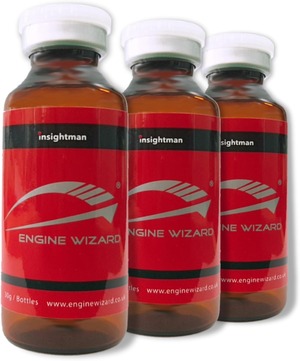7 Common Bobcat 334 Problems (Solutions Included)

Without a doubt, a crucial component of your company is your Bobcat mini excavator. The remarkably robust Bobcat 334 can be found on many construction sites around the country. This model shares features with the Bobcat 331 such as rubber tracks, a long arm, and an auxiliary hydraulic system.
The chassis of this machine is very similar to the Bobcat 331, with the addition of a quick coupler and the ability to convert from a backhoe to a loader by attaching a dozer blade. This model’s joystick controls are soft-touch to reduce user fatigue. Except for power, this small excavator is substantially similar to the Bobcat 331 overall.
Sharing Experience with the Bobcat 334 – Problems and Solutions
True story:
“I had an overheating issue with a rental Bobcat 334 last summer for a company I did some contracting work for. I thought it was a big problem, but after cleaning the radiator and tightening the fan belt, the temperature dropped back to normal. It’s a quick fix that can save you a lot of hassle.” – Sam Masser, blogger here on The Mowers Guide
Although the small Bobcat 334 excavator is perfect for handling all of your medium-to-small-sized lawn and gardening tasks, it is not infallible. In addition to technical expertise, troubleshooting these problems necessitates a thorough comprehension of the machine’s mechanics.
This post will discuss seven Bobcat 334 problems that mini excavator owners or operators may run into and offer fixes for them.
The following lists seven typical issues with the Bobcat 334 mini excavator, along with solutions for each.
1. Engine Starting Issues
Problem: The engine fails to start or struggles to turn over.
Engine starting issues are common with heavy equipment like the Bobcat 334, especially after periods of inactivity or in extreme weather conditions. This problem can stem from various causes, including electrical, fuel delivery, and air intake system malfunctions.
Possible Causes
Battery Issues – A dead or weak battery, loose battery connections, or corroded terminals can prevent the engine from getting the electrical power it needs to start.
Fuel System Problems – A clogged fuel filter, air in the fuel lines, or a malfunctioning fuel pump can restrict fuel flow, making it difficult for the engine to fire up.
Starter Motor or Solenoid Fault – A faulty starter motor or solenoid may prevent the engine from turning over when you attempt to start it.
Cold Weather Starting – In colder temperatures, the engine may struggle to start if the glow plugs or block heater aren’t working properly.
Troubleshooting Steps
1. Check the Battery
- Symptoms – Engine turns over slowly or not at all, dashboard lights dim.
- Action – Use a multimeter to test the battery voltage. A fully charged battery should read about 12.6 volts. If the voltage is low, try charging the battery or replacing it if it won’t hold a charge. Also, clean the terminals and ensure tight connections to avoid power loss.
- Parts Needed – Replacement battery, battery terminal cleaner, or cable replacements if corroded.
2. Inspect the Fuel System
- Symptoms – Engine turns over but doesn’t start, or it starts but quickly stalls.
- Action – Verify that the fuel tank has enough fuel. Check and replace the fuel filters if clogged. Bleed air from the fuel lines by using the manual fuel primer pump (if equipped) to restore consistent fuel flow.
- Parts Needed – Fuel filter, fuel primer pump, fuel hose, or clamps.
3. Check the Starter Motor and Solenoid
- Symptoms – No response when turning the key, or a clicking sound but no engine turnover.
- Action – Inspect the starter motor and solenoid for wear or damage. Use a test light or multimeter to check if the starter solenoid is receiving power when the key is turned. If not, the solenoid may need replacement.
- Parts Needed – Starter motor, starter solenoid, or starter relay.
4. Cold Weather Solutions
- Symptoms – Difficulty starting in cold weather, especially after long idle periods.
- Action – Check if the glow plugs are functioning properly by testing them with a multimeter. Replace faulty glow plugs as necessary. If operating in cold environments, consider using a block heater to help warm the engine before starting.
- Parts Needed – Glow plugs, block heater.
5. Check the Air Filter
- Symptoms – The engine struggles to start or runs rough once started.
- Action – Inspect the air filter for dirt or debris that could restrict airflow. Clean or replace the air filter if it’s dirty or clogged.
- Parts Needed – Air filter replacement.
Common Repairs
Battery Replacement
If the battery is weak or dead, replace it with a new one. Make sure the battery meets the Bobcat 334’s specifications for cold cranking amps (CCA).
Fuel Filter Replacement
Regularly change the fuel filter to prevent clogs that can restrict fuel flow and cause starting problems.
Starter Motor Repair
If the starter motor is damaged, it will need to be repaired or replaced. Ensure the solenoid is functioning before replacing the motor itself.
For cold-weather starts, ensure the glow plugs are working. If they are worn out, replace them to assist in smoother engine starting.
Parts Required:
- Battery: Ensure it matches the required specifications for the Bobcat 334 (e.g., 12-volt, correct CCA).
- Fuel Filters: Replacement filters to maintain proper fuel flow.
- Starter Motor/Solenoid: Replace if damaged or failing to engage.
- Glow Plugs: For colder environments or if glow plugs are failing.
- Air Filter: Keep a clean air filter to prevent dirt from entering the engine and ensure proper air intake.
Full Repair
If you feel like you know what you’re doing, you can get a complete engine rebuild kit and do the overhaul yourself.
2. Hydraulic System Malfunctions
Problem: Hydraulic power loss or slow performance.
The hydraulic system is the heart of the Bobcat 334’s ability to operate attachments, move the machine, and get work done. If the hydraulics start acting up—whether it’s slower performance or complete power loss—it’s time to troubleshoot. Common culprits include low hydraulic fluid, dirty filters, leaking hoses, or a worn-out pump.
Possible Causes
One of the most frequent issues is low hydraulic fluid levels. Without enough fluid, the machine struggles with sluggish movement, jerky motions, or just losing power entirely. Always check the fluid level first—it’s the easiest fix and often the root cause.
Another common issue is clogged hydraulic filters. If the filters are dirty, fluid flow is restricted, which means the whole system works slower and less efficiently. Cleaning or replacing these filters can often restore normal function.
Leaking hoses or fittings are another major cause of hydraulic issues. Even a small leak can reduce system pressure and affect performance. Look for any signs of fluid on the ground or around the hoses—if you see any, it’s a good indication you need to replace a hose or tighten a fitting.
In some cases, the problem might be a worn or damaged hydraulic pump. If everything else looks good but the hydraulics still seem weak, listen to the pump. Strange noises like grinding could mean it’s on its way out, and you’ll need to consider repair or replacement.
Lastly, don’t forget about air in the hydraulic system. If you’ve recently done maintenance or changed components, air pockets can cause erratic, jerky movement. Running the hydraulic functions through their full range a few times should bleed the air and get things back to normal.
Troubleshooting Steps
- Check the Hydraulic Fluid:
Always start here. If the machine feels sluggish or the hydraulics seem weak, make sure the hydraulic fluid reservoir is full and the fluid is the right type (Bobcat specifies the proper fluid in the manual). If it’s low, top it off. Just be sure you’re using the right viscosity, especially if you’re working in different temperatures. - Replace Hydraulic Filters:
If the machine is still struggling after you’ve checked the fluid, the next step is the filters. Over time, they can get clogged with debris and dirt. Replacing these filters regularly ensures smooth fluid flow and keeps the system running efficiently. It’s a simple fix, but it makes a big difference. - Inspect for Leaks:
If your fluid levels are good but you’re still noticing performance issues, check all your hoses and fittings. Leaks are sneaky and can be hard to spot, but any fluid on the ground or around the machine is a giveaway. Replace any worn-out hoses or seals immediately. - Test the Hydraulic Pump:
If everything else checks out and you’re still having issues, it’s time to look at the pump. A weak pump can’t maintain the pressure needed for proper operation. Listen for unusual sounds, like grinding, and test the pump’s output pressure. If it’s not up to spec, it might need repair or replacement. - Bleed the Hydraulic System:
If you’ve done maintenance recently, there might be air in the lines. This can cause jerky movements or slow response times. To fix this, run all the hydraulic functions through their full range of motion (like lifting the boom or curling the bucket) a few times. That should force the air out and get everything working smoothly again.
People Stories:
“I recently had an issue with my Bobcat 334 where the hydraulic system started to act sluggish. The arms weren’t moving as fast, and I noticed a slight drop in power when lifting. After checking the hydraulic fluid, I saw it was low, so I topped it off with the correct oil, but the problem didn’t fully go away. I decided to inspect the hydraulic filters and sure enough, they were clogged with debris. Replacing the filters made a huge difference—the machine’s power came back, and the movements were smooth again. It was a simple fix, but it taught me the importance of keeping up with regular maintenance.” – Almer, page follower
Common Repairs:
- Hydraulic Fluid Refill or Replacement: If the fluid is low or contaminated, refill or completely replace it with fresh hydraulic fluid.
- Filter Replacement: Regularly changing hydraulic filters can prevent clogs that lead to sluggish performance or power loss.
- Repair or Replace Leaking Hoses: Leaks in the hydraulic lines can reduce system pressure, so replace any damaged hoses or seals to restore full power.
- Pump Repair or Replacement: If the hydraulic pump is worn or damaged, it will need to be repaired or replaced to restore proper pressure and functionality.
- Fixing Air Leaks: Bleeding the system to remove trapped air or ensuring tight connections can prevent further air-related issues.
Parts Required:
- Hydraulic Fluid: Use the correct hydraulic oil grade specified for the Bobcat 334 (typically a multi-grade hydraulic oil).
- Hydraulic Filters: Keep spare filters on hand for regular maintenance.
- Hydraulic Hoses and Seals: Replace as needed when signs of wear, cracks, or leaks are detected.
- Hydraulic Pump: Replace or repair if malfunctioning or worn.
- Fittings and Clamps: For securing hoses and preventing leaks.
3. Overheating Issues
Problem: The mini excavator’s temperature rises above normal levels.
Overheating is a serious issue for the Bobcat 334, as it can lead to engine damage if not taken care of quickly. Several factors could be behind the temperature spike – anything from a blocked radiator to worn belts and hoses. Figuring out the root cause early can save you from a major breakdown later on.
Possible Causes:
The most common culprit is a blocked radiator. Dust, grass, or dirt can easily accumulate on the radiator, especially after long hours of use, restricting airflow and making the engine run hot. Another issue could be worn hoses or belts. Cracked hoses might leak coolant, and a loose or broken belt can stop the cooling fan or water pump from working correctly. Lastly, if the cooling fan itself isn’t operating well, either due to a faulty fan or loose belt, the engine won’t get enough airflow to stay cool.
Troubleshooting Steps:
- Clean the Radiator:
If you notice the temperature rising, especially after extended use, the first thing to check is the radiator. Dirt and debris often get trapped in the fins, blocking airflow. To fix this, give it a good cleaning with compressed air or a low-pressure water hose. Make sure you’re careful not to damage the delicate fins. This simple step can do wonders for restoring airflow and cooling efficiency. - Inspect the Hoses and Belts:
If cleaning the radiator doesn’t solve the issue, take a look at the hoses and belts. Over time, these wear down, leading to leaks or even breaks. Check for any visible cracks in the hoses or signs of coolant leaks. Also, make sure the belts are in good condition and properly tensioned. If you see any damage or the belts are loose, it’s time for a replacement. - Verify the Cooling Fan Operation:
Sometimes the fan itself can be the problem. If it’s not spinning freely or it’s running too slowly, the engine will overheat—especially when the machine is idling or running at low speeds. Check the fan and make sure the belt isn’t slipping. If it’s not working properly, you may need to repair or replace the fan motor or the belt.
Common Repairs
Radiator Cleaning: This is a must-do for regular maintenance, especially if you’re working in dusty or dirty environments. A blocked radiator is one of the most common reasons for overheating.
Replace Worn Hoses and Belts: Over time, the heat and vibration from the machine will wear down hoses and belts. Replace them as soon as you notice signs of wear to avoid bigger issues.
Fan Belt Tensioning: A loose fan belt can cause major cooling problems. Regularly checking the tension and adjusting it if necessary is key. If the belt looks worn or is slipping, swap it out.
Quote from an Operator:
“I noticed my Bobcat 334 started overheating after a few hours of operation, especially when working in dusty areas. I checked the radiator and it was packed with dirt. After a good cleaning, the overheating stopped immediately. I also found a small crack in one of the radiator hoses, so I replaced that as a precaution. Since then, I haven’t had any temperature issues.” — Jake, construction equipment operator
Parts Required:
- Radiator Cleaning Supplies: Compressed air or water hose for cleaning the radiator.
- Replacement Hoses: High-temperature resistant hoses that match Bobcat’s specifications.
- Fan Belt: A properly tensioned and well-maintained belt to keep the cooling system efficient.
- Cooling Fan Motor or Clutch: Replace if the fan is not functioning properly.
4. Electrical Problems in the Bobcat 334
Problem: The electrical system of the mini excavator malfunctions or fails to operate specific functions.
- Inspect the fuses and relays. Check for any blown fuses or faulty relays. Replace as necessary.
- Examine the wiring connections. Ensure all electrical connections are secure and free from corrosion. Fix any loose or damaged wires.
- Test the switches and controls. Verify that all switches and controls are functioning properly. Replace if needed.
5. Common Steering Problems with the Bobcat 334 Compact Excavator
The Bobcat 334 is a versatile compact excavator, but like any piece of equipment, it can face its share of issues. One common area of concern that I’ve encountered is steering problems, especially given that the Bobcat 334 relies on tracks instead of traditional tires. In this section, I’ll go over some of the most frequent steering issues you might experience with your Bobcat 334, and what you can do to identify and address them.
Track Slippage or Dragging
One of the most noticeable steering problems with the Bobcat 334 is track slippage or dragging. When the tracks don’t move in sync or drag on one side, the machine becomes difficult to steer straight. I’ve found that this often happens due to a lack of track tension. If the tracks are too loose, they can’t grip the ground properly, causing the machine to veer off or struggle to turn.
Quick Tip: Check the track tension regularly. If they seem too loose, it might be time to adjust or even replace them to ensure they have a firm grip on the ground.
Sometimes: The tracks roller can be damaged or just out of place. You can adjust it so it’s in the correct alignment to hold the tracks. If it’s damaged there are many ways to buy one online and replace it.
Hydraulic Issues Affecting Steering
Hydraulic problems are another major contributor to steering issues in the Bobcat 334. If you’re finding that the machine doesn’t turn smoothly or lacks the power it once had, it could be due to low hydraulic fluid levels or a malfunctioning hydraulic pump. Personally, I always keep an eye on the hydraulic fluid levels before starting a job—it’s one of those small things that can save a lot of headaches down the line.
What to Look For: Low fluid levels, leaks, or any strange noises coming from the hydraulic system. Addressing these early can prevent more significant issues later on.
Faulty Drive Motors
The Bobcat 334’s steering relies heavily on the functionality of its drive motors. If one of these motors fails or loses power, the excavator can pull to one side or fail to turn properly. This issue can often be traced back to either electrical problems within the motor or wear and tear over time. From my experience, regular inspections of the drive motors can help identify small problems before they turn into costly repairs.
Maintenance Tip: Listen for unusual sounds coming from the drive motors. Grinding or whining noises can be a clear sign that there’s a problem that needs attention.
Replacing the hydraulic drive motor is expensive but at least it’s still cheaper to replace and repair thank to sell your broken Bobcat.
Control Lever Problems
Another issue that can affect steering is the control levers themselves. If they become unresponsive or require excessive force to operate, it’s a good sign that something’s wrong. Sometimes, the problem lies in the control cables being worn out or misaligned. I’ve noticed that when these cables wear down, it makes even simple turns feel sluggish and unpredictable.
DIY Fix: Make sure the control levers and cables are properly lubricated and free from debris. If they still feel stiff, it might be time to replace the control cables.
Uneven Track Wear
Uneven wear on the tracks can also contribute to steering problems with the Bobcat 334. If one track is more worn out than the other, the machine will tend to pull in that direction. I usually do a visual inspection of the tracks at the end of each workday, which helps spot any uneven wear early on. This simple habit can go a long way in preventing steering difficulties.
Pro Tip: Rotate the tracks periodically to ensure they wear evenly and replace them as soon as you notice significant degradation.
6. Unusual noises or vibrations while operating a Bobcat 334
Problem: The mini excavator produces abnormal noises or vibrations during operation.
- Inspect for loose or damaged parts. Check all critical areas, such as the engine, drive chains, wheels, and attachments. Adjust or swap out any broken or loosened components.
- Lubricate moving parts: Make sure that all bearings, bushings, and pins are adequately lubricated.
- Do routine upkeep: Pay attention to the manufacturer’s recommended maintenance schedule to avoid issues brought on by neglect.
Parts:
7. Parking brake issue
The parking brake may not engage or disengage correctly, which can be an issue for operators. One of three possible causes of this problem is a broken parking brake switch, a worn-out parking brake lever, or a defective brake solenoid.
- Make sure the brake solenoid is operating properly by inspecting it before attempting to fix the issue. If it is not, replacement is necessary.
- Look for wear and tear on the parking brake lever and replace it if necessary.
- Finally, check and test the parking brake switch to make sure it is operating properly. If not, replace it. Users can make sure the parking brake on the Bobcat 334 loader is engaged and disengaged properly by carefully inspecting and fixing these parts.
Key Takeaways for Solving Bobcat 334 Issues (Be Up For It!)
Owners or operators of Bobcat 334 mini excavators can guarantee peak performance, extend lifespan, and reduce downtime by quickly addressing and resolving these frequent issues.
It takes a methodical approach and a thorough understanding of the mechanical aspects of the Bobcat 334 mini excavator to troubleshoot its issues. Operators must perform thorough inspections and use the appropriate troubleshooting methods. By doing so, they can resolve these issues effectively and ensure the smooth operation of the Bobcat 334 mini excavator.
Keep Your Mower Healthy
|
Chevron Techron Concentrate Plus Fuel System Cleaner 
Shop Now
|

Shop Now
|
Engine Oil Additive, Engine Treatment, Wear & Tear Protection for Gasoline & Diesel 
Shop Now
|
FAQs
Who produces the Bobcat diggers?
The former Clark Equipment Company is now known as the Bobcat Company. The globally owned Bobcat Company is the registered trademark holder of the “Bobcat” name.
What sets Bobcat 331 apart from 334?
Compared to the Bobcat 331 model, the Bobcat 334 is a larger, more powerful, and extremely resilient model. All across the country, construction sites frequently have it. Like the Bobcat 331, this model has rubber tracks, a long arm, and an auxiliary hydraulic system.
What is the weight of a Bobcat 334?
Fabricated between 2004 and 2009, the Bobcat 334 G Mini Excavator has dimensions of 4.89 meters by 1.54 meters by 2.34 meters and a transport height of 2.34 meters. It weighs 3.55 tons. The track width is 320 HP, and its bucket capacity is 0.1 U/min.
What is the operating weight of a Bobcat 334 mini excavator?
The Bobcat 334 mini excavator has an operating weight of approximately 7,568 lbs (3,433 kg), making it a versatile machine for small to medium-sized jobs.
What type of hydraulic fluid does the Bobcat 334 use?
The Bobcat 334 uses a multi-grade hydraulic oil, typically ISO VG 46 or Bobcat All-Season Hydraulic/Hydrostatic Fluid, depending on the operating environment.
How do I troubleshoot hydraulic issues on a Bobcat 334?
Hydraulic problems can stem from low fluid levels, clogged filters, or damaged hoses. Start by checking the hydraulic fluid level, inspecting filters, and looking for leaks or hose damage. We recommend you read our comprehensive blog on this.
How much can a Bobcat 334 lift?
The Bobcat 334 mini excavator can lift up to 1,993 lbs (904 kg) at ground level, though this depends on the arm position and load type.
What engine does the Bobcat 334 mini excavator use?
The Bobcat 334 is powered by a Kubota V2203-M-DI diesel engine, delivering 40.9 horsepower (30.5 kW) for reliable performance on job sites.
How do I fix overheating problems in a Bobcat 334?
To fix overheating issues, clean the radiator, check the coolant levels, inspect hoses for leaks, and ensure the cooling fan is functioning properly.
What is the fuel capacity of the Bobcat 334 mini excavator?
The Bobcat 334 has a fuel tank capacity of 15.3 gallons (58 liters), providing extended operation time before needing a refill.
How often should I change the hydraulic filters on a Bobcat 334?
Hydraulic filters should be changed every 250 hours of operation or as recommended by Bobcat, to ensure optimal system performance.
What attachments are compatible with the Bobcat 334?
The Bobcat 334 is compatible with a wide range of attachments, including buckets, augers, breakers, and grading blades, allowing for versatile use across different tasks.
What is the maximum digging depth of a Bobcat 334 mini excavator?
The Bobcat 334 has a maximum digging depth of 10.2 feet (3.1 meters), making it suitable for a variety of excavation projects.
Related Post:
- 6 Bobcat S590 Problems – Troubleshooting and Solutions
- 7 Common Bobcat S250 Problems (Complete Solutions)
- 8 Common Bobcat S185 Problems (Complete Solutions)
- 8 Common Bobcat CT1025 Problems (Complete Solutions)
- 9 Common Bobcat T770 Problems (Complete Solutions)
- 6 Common Bobcat T66 Problems (Complete Solutions)
- 6 Common Bobcat 763 Problems (Complete Solutions)
For more outdoor vehicle problems solutions visit here and for more guides related to mowers visit Mowers Guide

